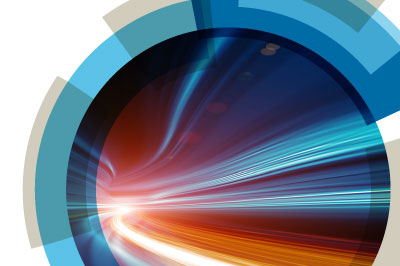This Faraday Discussion will focus on the chemistry, physics and material sciences contributions toward the rapidly evolving field of artificial water channels.
The development of synthetic biomimetic artificial water-channels and pores is key for a better understanding of the natural function of protein channels. It is hoped to offer new strategies to generate highly selective, advanced materials for water purification systems.
While synthetic chemists have produced sophisticated architectures able to confine water clusters, most water channel based work is being conducted with natural protein channels as selectivity components, embedded in the diverse arrays of bio-assisted artificial systems. Such systems combine natural proteins that present high water conductance states under natural conditions with artificial lipidic or polymeric matrices. Experimental results have demonstrated that natural biomolecules can be used as bio-assisted building blocks for the construction of highly selective water transport through artificial channels. A next step is the design and construction of simpler compounds that maintain the high conduction activity obtained with natural compounds, leading to fully synthetic artificial biomimetic channels. Such studies aim to use constitutional artificial desalination membranes for highly selective water transport.
Moving to simpler water-channel systems offers a chance to better understand mechanistic and structural behaviours and to uncover novel interactive water channels that might parallel those in biomolecular systems.
This meeting will have a strong emphasis on the key challenges in the areas of:
Faraday Discussions have a special format where research papers written by the speakers are distributed to all participants before the meeting, and most of the meeting is devoted to discussing the papers. Everyone contributes to the discussion - including presenting their own relevant research. The research papers and a record of the discussion are published in the journal Faraday Discussions.
Natural proteins (i.e. Aquaporin-AQP, Influenza A M2 or Gramicidin-GA) are well known, non-exclusive examples of proteins in which water molecules and protons are envisioned to diffuse along the water filled pores. Most protein channels share some structural aspects, such as their self-assembled multiple subunits within trans-membrane domains and the selectivity of these protein channels is usually driven by the narrowest region of the pore, showing gating behaviours generated by the structural motion of the external subunits in response to voltage, ligand and pH stimuli.
This session will address the key challenges of the biophysics of protein water channels and explore what can be learnt from natural proteins. Discussion will focus on the structure of natural proteins and their functions, and the natural mechanisms of selective translocation.
Biomimetic water channels
Inspired by the investigation of natural water-channels, the development of artificial biomimetic channels is only just in its beginnings. The molecular-scale hydrodynamics of water through a channel will depend, as in natural ones, on the biometics of channel-water and water-water interactions and on the water in-pore electrostatic dipolar profile within the channel. Mimicking the function of the complex superstructures of proteins is an important challenge.
Moving from complex natural to simpler water-channel systems, Session 2 will cover the mechanistic and structural behaviour of such interactions, unlocking the door to the novel interactive water-channels, paralleling that of biomolecular systems.
The modelling and enhancement of water hydrodynamics
Molecular dynamics simulations strongly contribute to the understanding and improvement of the dynamic behaviour of water molecules under confined conditions by fine-tuning the balance between attractive and repulsive elements. The single-file columns of water confined along the internal surfaces of pores may impose a net-dipole alignment of water molecules that can influence the conduction of fluids, envisioned to diffuse along the dipolar hydrophilic pathways. Powerful synthetic architectures, mimicking the natural protein functions and generating stable water/proton translocation pathways in bilayer membranes will also be characterized at high spatial- and time resolutions. Their dynamic features under bilayer-confining conditions generate new opportunities to further modify and engineer such systems.
Session 3 will explore full molecular models in realistic lipid bilayer, methods to characterize the single molecule water permeability of water channels, theoretical stability and dynamics of the assembly, and the energetics of water transport.
Applications to water transport systems
The result of the fast transport of water through the channels has important practical applications such as advanced desalination, for example, to obtain ultrapure water for biomedical or nanotechnology applications. Their final target is related to complex systems and this final session will discuss highly selective membrane constructs, self-assembly of water channels in lipids and block copolymers for innovative materials and sensing, gas transport in water channels, gas transport in membrane proteins and gas separation applications using molecular scale channels.
The development of synthetic biomimetic artificial water-channels and pores is key for a better understanding of the natural function of protein channels. It is hoped to offer new strategies to generate highly selective, advanced materials for water purification systems.
While synthetic chemists have produced sophisticated architectures able to confine water clusters, most water channel based work is being conducted with natural protein channels as selectivity components, embedded in the diverse arrays of bio-assisted artificial systems. Such systems combine natural proteins that present high water conductance states under natural conditions with artificial lipidic or polymeric matrices. Experimental results have demonstrated that natural biomolecules can be used as bio-assisted building blocks for the construction of highly selective water transport through artificial channels. A next step is the design and construction of simpler compounds that maintain the high conduction activity obtained with natural compounds, leading to fully synthetic artificial biomimetic channels. Such studies aim to use constitutional artificial desalination membranes for highly selective water transport.
Moving to simpler water-channel systems offers a chance to better understand mechanistic and structural behaviours and to uncover novel interactive water channels that might parallel those in biomolecular systems.
This meeting will have a strong emphasis on the key challenges in the areas of:
- Biophysics of protein water channels
- Biomimetics and what we may learn from natural proteins
- Synthesis and design of highly selective water channels
- Spectroscopy and experimental characterization of nano-confined water
- The role of hydrogen bonding in permeability of water across nano-channels
- Structure and dynamics of channel like structures in bilayer membranes
- Hydrodynamics in water channels (modelling and computational biophysical-chemistry)
- Self-assembly of channels in lipids and materials
- Applications for membranes and sensors
Format
The Faraday Division have been organising high impact Faraday Discussions in rapidly developing areas of the physical sciences, with a focus on physical chemistry and its interfaces with other scientific disciplines for over 100 years.Faraday Discussions have a special format where research papers written by the speakers are distributed to all participants before the meeting, and most of the meeting is devoted to discussing the papers. Everyone contributes to the discussion - including presenting their own relevant research. The research papers and a record of the discussion are published in the journal Faraday Discussions.
Aims
This meeting aims to gather key participants representing the full scientific scope of the topic, specifically, but not limited to, the areas of Ion channels, Artificial channels, Membrane, Supramolecular chemistry, Materials and Biophysics. The focus of the discussions will be on the chemistry, physics and material sciences breakthroughs in the rapidly evolving field of artificial water channels, and will aim to uncover novel interactive water channels that might parallel those in biomolecular systems.Themes
Structure and function of natural proteins for water transportNatural proteins (i.e. Aquaporin-AQP, Influenza A M2 or Gramicidin-GA) are well known, non-exclusive examples of proteins in which water molecules and protons are envisioned to diffuse along the water filled pores. Most protein channels share some structural aspects, such as their self-assembled multiple subunits within trans-membrane domains and the selectivity of these protein channels is usually driven by the narrowest region of the pore, showing gating behaviours generated by the structural motion of the external subunits in response to voltage, ligand and pH stimuli.
This session will address the key challenges of the biophysics of protein water channels and explore what can be learnt from natural proteins. Discussion will focus on the structure of natural proteins and their functions, and the natural mechanisms of selective translocation.
Biomimetic water channels
Inspired by the investigation of natural water-channels, the development of artificial biomimetic channels is only just in its beginnings. The molecular-scale hydrodynamics of water through a channel will depend, as in natural ones, on the biometics of channel-water and water-water interactions and on the water in-pore electrostatic dipolar profile within the channel. Mimicking the function of the complex superstructures of proteins is an important challenge.
Moving from complex natural to simpler water-channel systems, Session 2 will cover the mechanistic and structural behaviour of such interactions, unlocking the door to the novel interactive water-channels, paralleling that of biomolecular systems.
The modelling and enhancement of water hydrodynamics
Molecular dynamics simulations strongly contribute to the understanding and improvement of the dynamic behaviour of water molecules under confined conditions by fine-tuning the balance between attractive and repulsive elements. The single-file columns of water confined along the internal surfaces of pores may impose a net-dipole alignment of water molecules that can influence the conduction of fluids, envisioned to diffuse along the dipolar hydrophilic pathways. Powerful synthetic architectures, mimicking the natural protein functions and generating stable water/proton translocation pathways in bilayer membranes will also be characterized at high spatial- and time resolutions. Their dynamic features under bilayer-confining conditions generate new opportunities to further modify and engineer such systems.
Session 3 will explore full molecular models in realistic lipid bilayer, methods to characterize the single molecule water permeability of water channels, theoretical stability and dynamics of the assembly, and the energetics of water transport.
Applications to water transport systems
The result of the fast transport of water through the channels has important practical applications such as advanced desalination, for example, to obtain ultrapure water for biomedical or nanotechnology applications. Their final target is related to complex systems and this final session will discuss highly selective membrane constructs, self-assembly of water channels in lipids and block copolymers for innovative materials and sensing, gas transport in water channels, gas transport in membrane proteins and gas separation applications using molecular scale channels.











